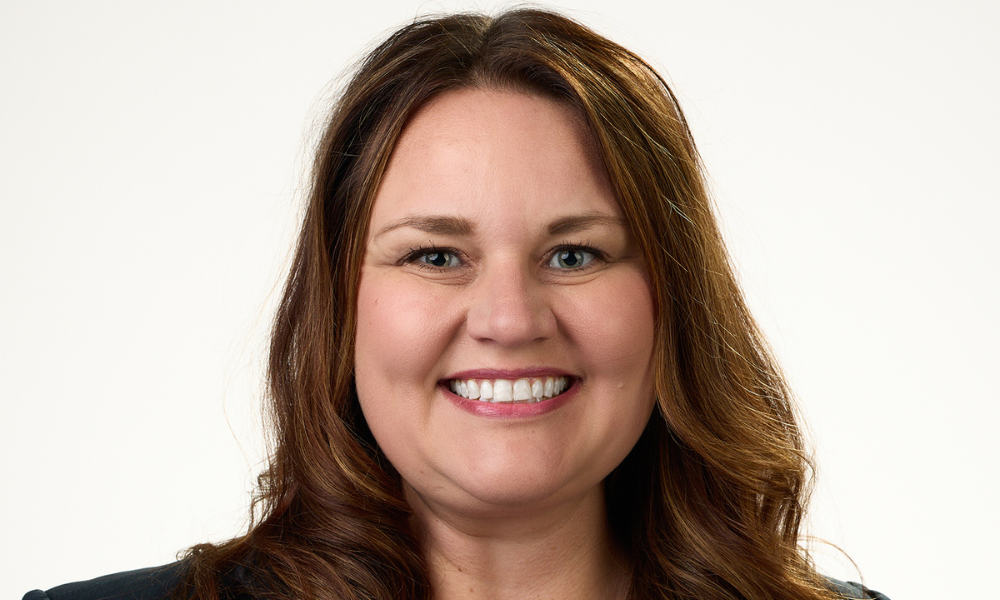'Be a superfan': HR veteran advocates rallying around your team through wins and losses

One of the highlights of Ashlee Langlois’ career was attaining her CPHR designation early on, back in 2008.
“I knew a couple folks who worked in consulting that had the designation, and I just thought that having a professional designation would help me really excel as an HR professional and keep my skills sharp and continue learning.”
Now, 16 years later, it’s fitting that Langlois is heading up CPHR Saskatchewan as CEO and registrar, having been a volunteer, mentor and active member for so many years.
“I am a huge proponent of obtaining the CPHR designation, and so in my past workplaces, when HR professionals were joining the workforce and… they knew I had the designation, folks would come to me and ask, ‘OK, how do I get the designation? What are the benefits? Why should I do this?
“And I always took the time to sit down and talk about CPHR Saskatchewan and the CPHR designation... And now in the role of CEO and registrar… that's my job. I get to do it on a larger scale for the entire province, and promote the importance of the HR profession, which is just such amazing opportunity. I am just thrilled.”
From consulting to credit union
Langlois followed a path into HR for the same reason many other HR leaders have done so – wanting to help people.
Having pursued a Bachelor of Arts degree in psychology, she went on to attain a Bachelor of Business Administration in HR.
“I came to realize that the field of HR was something that I enjoyed, and HR has such an impact on businesspeople and the employee experience. And I think that was the real draw for me is it doesn't matter where you work in HR, there's a human on the end of each HR policy and practice which ultimately impacts people's experience in the workplace. So having the ability to create that impact and working in HR was really what attracted me to continue to pursue my career in HR.”
Plus, the diversity of the HR space holds a lot of appeal, she says.
“I've had the opportunity to work in a variety of areas of HR, like employee experience, organizational development, leadership, culture, strategy, diversity, equity, inclusion, recruitment — it's just so varied, there's so many different areas.”
Langlois’ first real job in HR was at the consultancy Hewitt Associates back in 2006 (later purchased by Aon) where she worked for nearly 10 years.
And by 2015, Langlois was ready to move on – to the employer side.
“I really wanted to increase my depth and breadth in the HR world. And Farm Credit Canada was a client of mine when I worked at Aon and so I knew FCC really well; I knew they're an amazing employer with a culture that I aligned to and had incredible leadership.”
“It was a great opportunity for me to find my way into an internal HR team, to get that kind of experience that I felt was lacking in my career.”
Langlois says she had a “really great” career at FCC, where she worked for almost nine years in a couple of different leadership roles, most recently as executive manager of human resources for five years.
“I had the opportunity to work closely with the chief human resources officer on strategic and tactical items, which just furthered my HR and business operations knowledge.”
3 focus areas at CPHR Saskatchewan
Langlois took on the lead role at CPHR Saskatchewan in May 2024. The 1,400-member organization recently approved a new strategic plan, she says, with the three key areas being regulatory, accountability and governance. Since HR is a self-regulated profession in Saskatchewan as of 2021, “there are regulatory frameworks that support the public interest mandate and the role of the board and myself,” says Langlois.
“That’s still somewhat new for us, the work as regulator, so that would be a priority on our list.”
In addition, ensuring the professional standards in the province are robust, aligned with employers and consistent with CPHR Canada partners is another priority for the organization, she says, “along with the professional development that’s aligned to the competency framework in renewing and maintaining the designation.”
Thirdly, brand and stakeholder relations are a big focus, says Langlois, which means “spreading the good word about HR to ensure the public sees the value of the HR profession and CPHR designation, and continuing to grow the profile of CPHR with individuals who practise HR within the province.”
Highlights of a career in HR
Looking back, Langlois says there have been many highlights and things she is grateful for in her career. For example, the ability to learn about many different organizations and industries during her time at Aon.
“I had the opportunity to work with organizations across different sectors, clear across Canada, and I got to work on global projects as well. And so that was just an incredible learning experience for me that I was thankful for early on in my career.”
As for FCC, that was a great opportunity to try out a couple of different leadership roles in HR, she says.
“I really had the opportunity to develop myself and my leadership purposes.”
That leadership purpose is like a north star and involves three words: “Be a superfan,” says Langlois, explaining she is a big sports fan, so the analogy “rings true.”
“I translate that into the workplace as rallying around my team, supporting them through the wins and the losses and so just being that superfan and supporting and developing my team and those around me is always just at the forefront of my mind.”
One last highlight has been the “fantastic” mentors and leaders she has worked with over the years.
“Without them, I wouldn’t have had the career and the experiences, and wouldn’t be where I am today,” says Langlois, who recently attained her coaching designation from the International Coaching Federation.
Top challenges for HR
For Langlois, one of the big challenges for HR these days is the rise of artificial intelligence (AI) in the workplace, particularly in figuring out how to increase efficiency, she says.
“There's also a bit of a link there to data-driven HR and how we use people data to make more effective decisions and create positive outcomes.”
The continuing challenge of employee attraction and retention is also on the list, says Langlois, going hand in hand with organizational culture and leadership.
“Organizational culture is on the minds of many HR professionals because it's a business imperative that fuels attraction, retention [of] critical talent, and if we don't have the right talent in place, then to deliver on company goals, objectives, business imperatives is at risk.”
Lastly, diversity, equity and inclusion, says Langlois, which is on the minds of many HR professionals.
“Demographics are changing due to rapid globalization, aging population, increased female labour force participation and immigration trends, so Canadian workplaces are becoming more diverse, and [it’s about] how can organizations execute on creating a diverse and inclusive work environment where everyone can thrive?”




